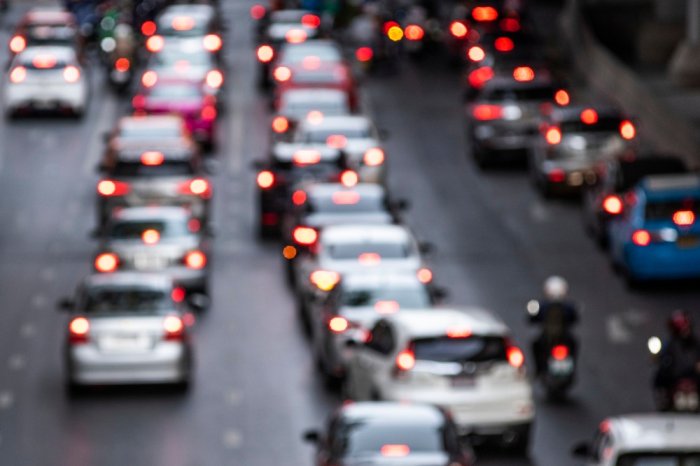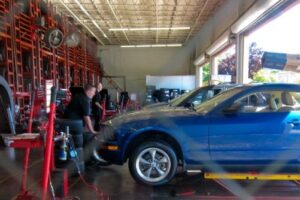Traffic management is a process designed to ensure the right volume and movement of vehicles, with the right priority of service and in the right sequence. The success of road traffic operations depends directly on the effectiveness of this process. Traffic management can effectively use available network capacity and keep it clear while guaranteeing a high quality of service.
The traffic management system works with real-time traffic monitoring & enables a smooth and seamless traffic flow for your site. Here are different types of traffic management:
Table of Contents
Traffic Management for Highways
Highway traffic management is a crucial part of the transportation system, and providing a safe and efficient vehicle path is essential. Managing traffic along highways involves many tasks, including maintaining the safety of motorists, pedestrians, and other road users and ensuring that vehicles can move smoothly without delays or congestion.
Highways have always been congested and suffered from poor driving conditions, with accidents common on these roads. These issues can be resolved through smart traffic management systems, which monitor traffic flow and adjust accordingly. They also allow drivers to take advantage of available resources such as parking spaces and rest areas while providing information on alternative routes if necessary.
Smart traffic management systems are installed at strategic locations throughout the road network to monitor traffic patterns and identify congested areas to take appropriate action before problems arise. The system then communicates with other devices, such as traffic lights or signs, to adjust speeds or reroute traffic so that all vehicles are safely moved to their destination within a certain timeframe.

Traffic Management for Construction Sites
Traffic management for construction sites is a system that controls the flow of traffic and pedestrians to and from the construction site. It consists of signs, cones, barricades, and other devices that notify drivers about any potential hazards on the road.
Both the workers and drivers need to be aware of the construction activity going on so they can avoid accidents from occurring. Traffic management helps ensure workers are safe when working at heights or near traffic. It also allows drivers to make an informed decision about how to approach their journey around a construction site.
Traffic Management for Live Events and Public Gatherings
Traffic management for live events and public gatherings involves using temporary traffic controls to protect the safety of participants and spectators. These controls are often implemented during large-scale events such as parades, concerts, festivals, and sporting events. Traffic management can also be used during smaller gatherings like community celebrations or block parties with a high concentration of pedestrians on roadways.
Traffic management will vary depending upon the specific needs of each event or gathering, but common types include:
Parking control: Parking restrictions are implemented to ensure that other vehicles do not block access to an area or obstruct emergency vehicles. Some parking restrictions may be lifted after an event has ended so that roads can return to normal traffic flow.
Pedestrian cordon: A cordon is a line of barriers that prevent pedestrians from entering areas where they could be injured by moving vehicles or other hazards. The size of a cordon may vary depending on how large an area needs to be protected from vehicles. Still, it should never be smaller than five feet wide if possible because this helps ensure that everyone who crosses it can see what lies ahead before stepping out into the traffic flow.
Traffic Management for Cycle Lanes, Footpaths, Shared Zones, and Schools
Traffic management is the process of controlling traffic flow in a way that maximizes safety for all road users. There are four types of traffic management: cycle lanes, footpaths, shared zones, and schools.
A cycle lane is a designated lane for cyclists on the roads and gives them a dedicated space away from other vehicles on the road. There are two types: 2-way and 1-way. 2-way cycle lanes have a solid white line down the middle with an arrow pointing in both directions. 1-way cycle lanes have a solid white line down the middle with an arrow pointing in one direction only.
Footpaths are pedestrian-only areas that run alongside roads or railways, usually on the side of the road as the sidewalk. Footpaths can be wide enough for two or three people to walk side by side, so they’re great for families who want to spend time together while they travel.
Shared zones are areas where pedestrians and cyclists share space equally with drivers of motorized vehicles. Think of them as crosswalks without defined lines separating them from other areas around them. These zones are often used at intersections between streets where traffic moves quickly.
Schools have many different needs that must be addressed when designing traffic management plans. These include safety concerns such as ensuring children aren’t crossing roads without supervision and that school buses can get into and out of their parking lots without any issues.
It’s Important to Use the Right Traffic Management in Each Situation
Traffic management is a vital component of planning, particularly regarding road safety. Depending on the severity of the situation and the type of road being managed, there are a variety of traffic management techniques.




